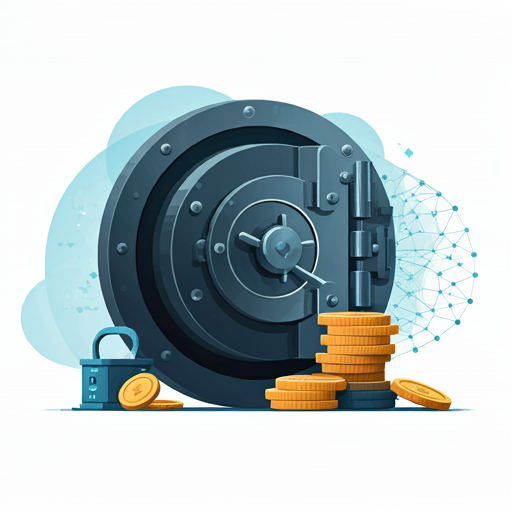Introduction to Cybersecurity in Finance
The Importance of Cybersecurity
In finance, cybersecurity is crucial for protecting sensitive data. Financial institutions face numerous threats, including data breaches and fraud. These risks can lead to significant financial losses and damage to reputation.
To illustrate, consider the following common threats:
Understanding these threats is essential. Knowledge empowers better decision-making. Cybersecurity measures can mitigate risks effectively.
Investing in robust security systems is wise. It safeguards assets and builds trust. Remember, prevention is better than cure.
Overview of Financial Cyber Threats
Financial institutions encounter various cyber threats that can compromise their operations. Notably, these include:
Such threats can lead to substantial financial losses. They also erode client trust. Understanding these risks is vital for effective risk management. Knowledge is power in finance. Implementing robust cybersecurity protocols is essential. Protect your assets diligently.
Understanding Cryptocurrency Security
How Cryptocurrencies are Vulnerable
Cryptocurrencies face unique vulnerabilities that can jeopardize user assets. For instance, wallet hacks can lead to significant losses. Additionally, exchanges are prime targets for cybercriminals.
Consider these common vulnerabilities:
These issues highlight the need for enhanced security measures. Awareness is crucial for cryptocurrency users. Protect your investments wisely.
Best Practices for Securing Cryptocurrency
To secure cryptocurrency, he should use hardware wallets. These devices provide offline storage, reducing exposure to hacks. Additionally, employing two-factor authentication enhances account security. This extra layer makes unauthorized access more difficult.
Regularly updating software is also essential. Outdated systems can harbor vulnerabilities. He must remain vigilant against phishing attempts. Awareness is key to preventing fraud. Protecting assets requires proactive measures.
Common Cyber Threats in the Financial Sector
Phishing Attacks
Phishing attacks pose significant risks in finance. Cybercriminals often impersonate legitimate entities to deceive individuals. He may redeive fraudulent emails requesting sensitive info. These tactics exploit trust and urgency.
Recognizing red flags is crucial . He should verify sender authenticity. Awareness can prevent costly mistakes. Protecting personal data is essential.
Ransomware and Malware
Ransomware and malware are critical threats in finance. These malicious programs can encrypt data, rendering it inaccessible. Organizations may face significant operational disruptions. Recovery often requires substantial financial resources.
He must implement robust security measures. Regular backups can mitigate data loss. Employee training is essential for awareness. Knowledge reduces vulnerability to attacks.
Regulatory Frameworks and Compliance
Key Regulations Impacting Cybersecurity
Key regulations significantly influence cybersecurity practices in finance. Notable frameworks include GDPR and PCI DSS. These regulations mandate strict data protection measures. Compliance is essential to avoid hefty fines.
Organizations must conduct regular audits. This ensures adherence to regulatory standards. He should prioritize risk assessments. Identifying vulnerabilities is crucial for protection.
Compliance Challenges for Financial Institutions
Financial institutions face numerous compliance challenges. Regulatory requirements are often complex and evolving. Adapting to these changes can strain resources. He must ensure staff are adequately trained.
Additionally, maintaining accurate records is essential. This helps demonstrate compliance during audits. Non-compliance can lrad to severe penalties. Awareness is crucial for effective management.
Technological Solutions for Cybersecurity
Blockchain Technology and Security
Blockchain technology enhances security in financial transactions. Its decentralized nature reduces the risk of fraud. Each transaction is recorded in an immutable ledger. This transparency fosters trust among participants.
He should consider smart contracts for automation. They execute agreements without intermediaries. Additionally, cryptographic techniques protect data integrity. Strong encryption is vital for safeguarding information.
Advanced Security Tools and Software
Here are 10 trending article titles for a financial website based on the latest news and analysis: No input data
Building a Cybersecurity Culture
Employee Training and Awareness
Employee training is essential for a strong cybersecurity culture. Regular workshops can enhance awareness of potential threats. He should focus on phishing and social engineering tactics. Understanding these risks is crucial for prevention.
Additionally, simulations can reinforce learning effectively. Practical exercises help employees recognize real threats. Continuous education fosters a proactive mindset. Knowledge is the first line of defense.
Incident Response Planning
Incident response planning is critical for financial institutions. A well-defined plan minimizes damage during a cyber incident. He should establish clear roles and responsibilities. This ensures a coordinated response to threats.
Regular drills can test the effectiveness of the plan. He must evaluate and update procedures frequently. Communication is vital during incidents. Quick action can mitigate potential losses.
The Future of Cybersecurity in Finance
Emerging Threats and Trends
Emerging threats in finance require constant vigilance. Cybercriminals are increasingly using artificial intelligence for attacks. This technology enables more sophisticated phishing schemes. He must stay informed about these developments.
Additionally, the rise of quantum computing poses risks. Traditional encryption methods may become obsolete. Financial institutions should invest in quantum-resistant solutions. Proactive measures are essential for future security.
Innovations in Cybersecurity Solutions
Innovations in cybersecurity are transforming financial security. Advanced machine learning algorithms can detect anomalies in real-time. This proactive approach enhances threat detection significantly. He should consider implementing these technologies.
Additionally, biometric authentication offers improved security measures. Fingerprints and facial recognition reduce unauthorized access risks. Investing in these solutions is essential for protection. Strong security fosters client trust and loyalty.
